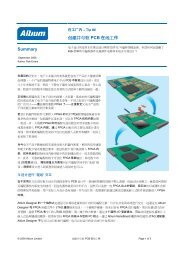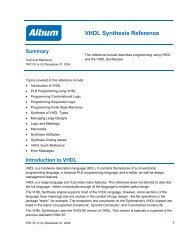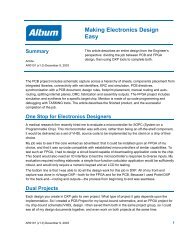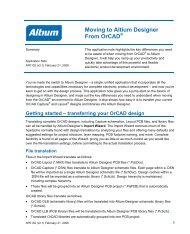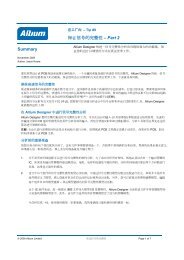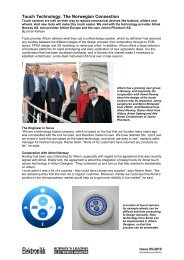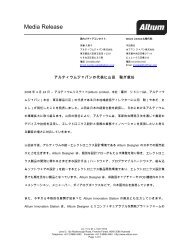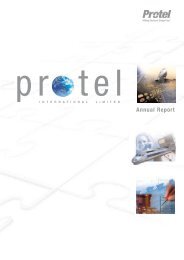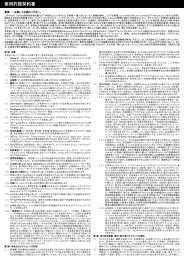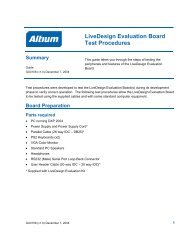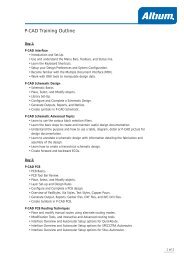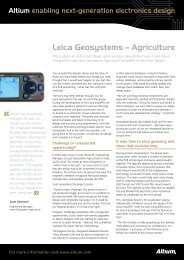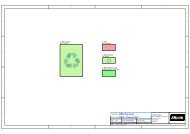TASKING C166 ELF-DWARF APPLICATION BINARY INTERFACE
TASKING C166 ELF-DWARF APPLICATION BINARY INTERFACE
TASKING C166 ELF-DWARF APPLICATION BINARY INTERFACE
Create successful ePaper yourself
Turn your PDF publications into a flip-book with our unique Google optimized e-Paper software.
<strong>TASKING</strong> <strong>C166</strong><br />
<strong>ELF</strong>-<strong>DWARF</strong> <strong>APPLICATION</strong> <strong>BINARY</strong> <strong>INTERFACE</strong><br />
2.5.2 Self-containedness<br />
The compiler generates the call frame information in such a way that no<br />
information from sections other than .debug_frame should be required to<br />
produce a stack trace. For example, it should not be necessary to look up<br />
DW_AT_calling_convention attributes.<br />
2.5.3 Addresses<br />
A crucial point is that everywhere that an address is the final value to be<br />
calculated or used to read from memory (e.g. as the operand of a<br />
DW_OP_deref), it must be assumed to be a 32-bit linear byte address.<br />
This differs from how the processor itself behaves, i.e. as will also be<br />
mentioned further below, effects like page addressing or the use of SPSEG<br />
are all made "explicit" in the debug information.<br />
This makes the debug information more complex, but has the advantage<br />
of requiring far fewer target-dependent code in the debugger.<br />
2.5.4 Definition of CFA<br />
For each address within a function with debug information, there should be<br />
a <strong>DWARF</strong> rule defining the so-called canonical frame address (CFA).<br />
Depending on the type of the function, this CFA may be associated with<br />
either the system stack or the user stack. This document does not describe<br />
how the CFA is defined for a given function type, and this may in fact<br />
change in the future without notice.<br />
This is not a problem because the CFA is merely an abstract concept that<br />
does little more than help compress the stack unwinding rule table. As<br />
long as debuggers use the <strong>DWARF</strong> information correctly, they should not<br />
need a definition of the CFA. However, it is defined here that the CFA rule<br />
can always be assumed to evaluate to a quantity that represents a 32-bit<br />
linear address. This is in line with what was stipulated in Section<br />
"Addresses" above.<br />
It is also noted that the CFA may be referenced from a location expression<br />
via DW_OP_call_frame_cfa. A related point is that the CFA and the<br />
DW_AT_frame_base are often related, but they should not be equated.<br />
2.5.5 Determining the Return Address<br />
The return address is defined by means of a "virtual" register. (As shown<br />
in the tabe above, this is now register 301, but debugger implementers<br />
119-EDABI 1.4 Released page 15 of 19 2008-09-04



